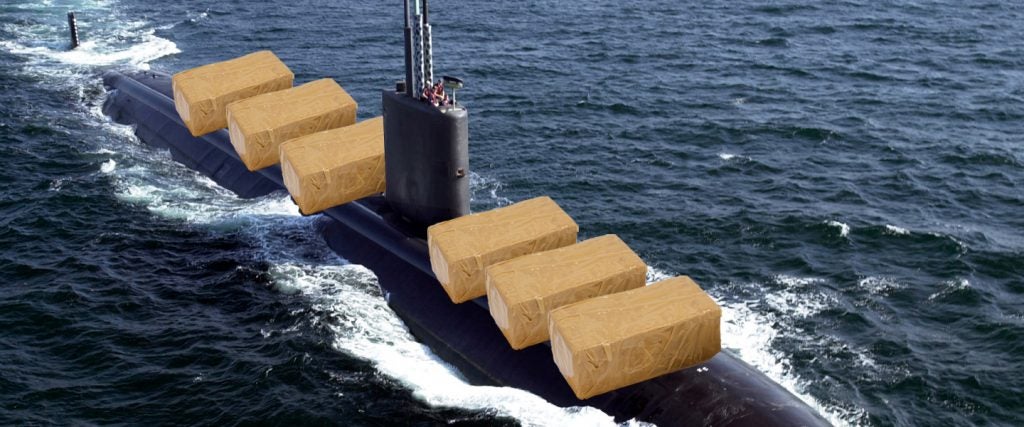Cocaine-hauling watercrafts are pretty common — and they come in many different shapes and sizes. Case in point: Just last April, the Coast Guard caught a 52-foot-long semi-submersible vessel (aka a “narco sub”) packed to the rivets with 2,500 kilos of cocaine — a coke haul worth roughly $75 million. That’s a lot of cash to let sink to the bottom of the ocean, and it gives you a sense of how motivated cocaine suppliers are to find new routes, methods and especially vessels for smuggling coke overseas.
Perhaps no one has been quite as innovative on this front as alleged international drug kingpin Ylli Didani and Marty Tibbitts, the late CEO of a regional telecom company in Michigan — at least, that’s according to federal authorities. Less than a decade ago, the unlikely duo supposedly banded together to create the ideal cocaine-smuggling vessel: a magnetic drone submarine that could attach itself to the underside of container ships crossing the Atlantic Ocean.
Tibbitts, in addition to running a highly successful company, was also a fan of classic planes — so much so that he co-founded the World Heritage Air Museum. Meanwhile, authorities say he was also funding an international drug ring through the pseudonym “Dale Johnson.” His financial involvement with Didani allegedly began in 2015, and the Feds estimate that Tibbitts invested a total $1.8 million into the operation. Per court documents, what ultimately brought the two together was their shared dream to design a new type of cocaine submarine.
Freight container ships are still the most common method to smuggle cocaine into a country. Each year, untold tons of cocaine are moved around the world on slow ships to distant ports. But when a large load is captured by law enforcement, the smugglers take a major financial hit. A cocaine submarine is designed to solve this problem.
Didani and Tibbitts supposedly planned to build what they referred to as “the torpedo,” a remote-controlled drone submarine that could be loaded offshore with a shipment of coke from people in go-fast boats. Once it was packed with its cargo, it could be piloted to its target. Next, it would attach itself to the underside of the metal hull of a container ship by strong magnets, and the container ship would carry the drone across the ocean without anyone noticing the drug-filled stowaway. Upon arrival, divers could be sent out to unfasten and retrieve the drone and bring the load ashore in the dark of night.
To achieve their dream vessel, Didani and Tibbitts wired $12,000 in cryptocurrency through an Albanian bank to a nautical machine company and asked them to build a prototype, according to court documents. The company accepted the order, working with the understanding that the prototype was designed to be an “underwater hull scrubber device.”
overall dimensions of the drone and the capacity of cocaine it could contain, according to court documents
But the torpedo never came to fruition. On July 20, 2018, Tibbitts died after his vintage plane crashed into a dairy barn in Sheboygan, Wisconsin, taking 50 dairy cows with him. He left behind his wife, who was his high school sweetheart, and their three children.
It was the beginning of the end for Didani as well. In 2019, one of his alleged cocaine transports to Europe was seized in the Netherlands — 3,400 kilos of coke, worth an estimated $100 million, hidden in a shipment of bananas. (The produce-concealment plan obviously was nowhere near as effective as a drone submarine would have been.) And in March 2021, European investigators from the Netherlands, France and Belgium were able to hack Didani’s Sky ECC accounts, which led to a bust of 80 people believed to be involved in his drug ring. Didani was arrested in North Carolina later that month, and he’s currently in federal holding.
And so, in the end, Didani has found himself in the very position he was trying to avoid — sunk.

